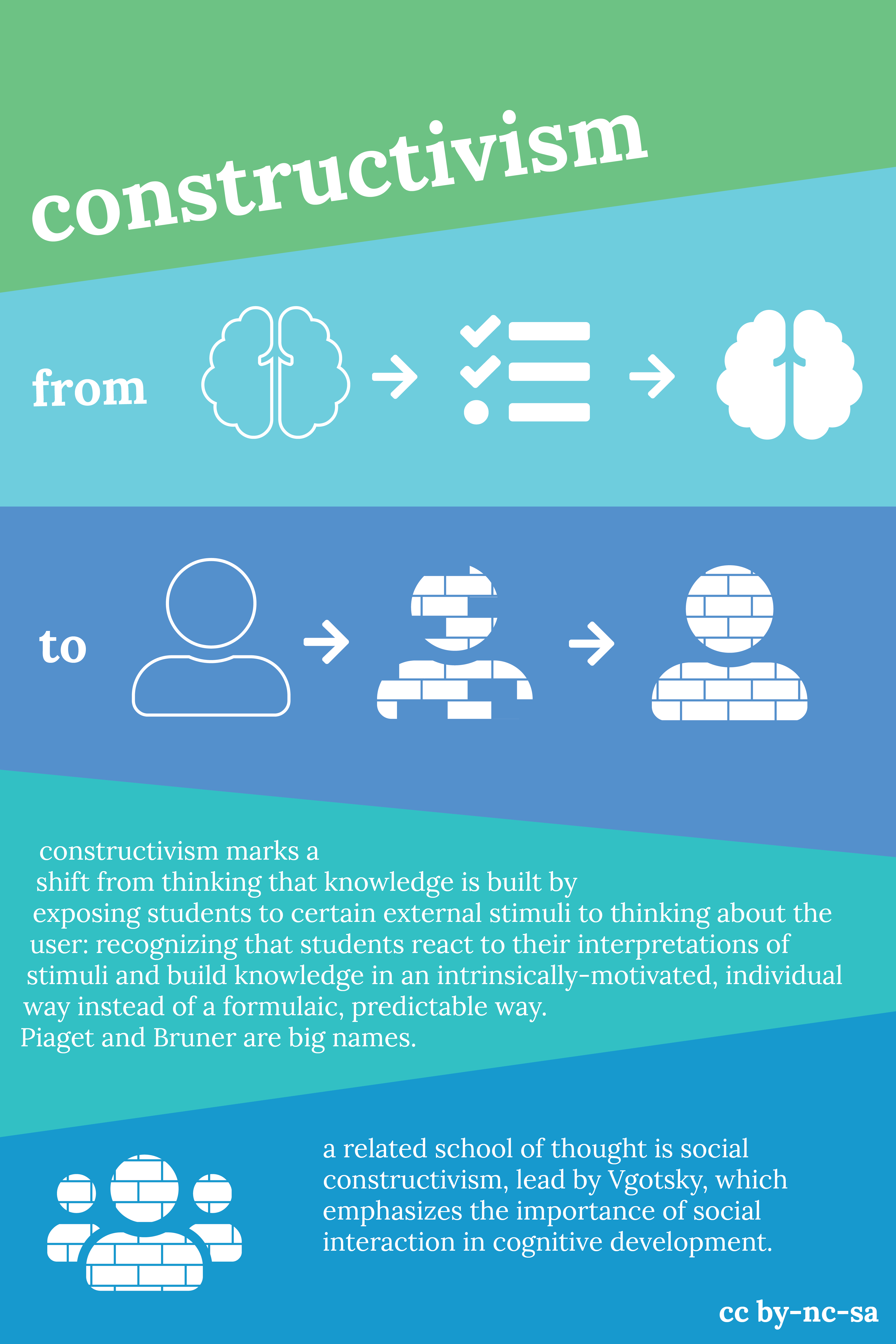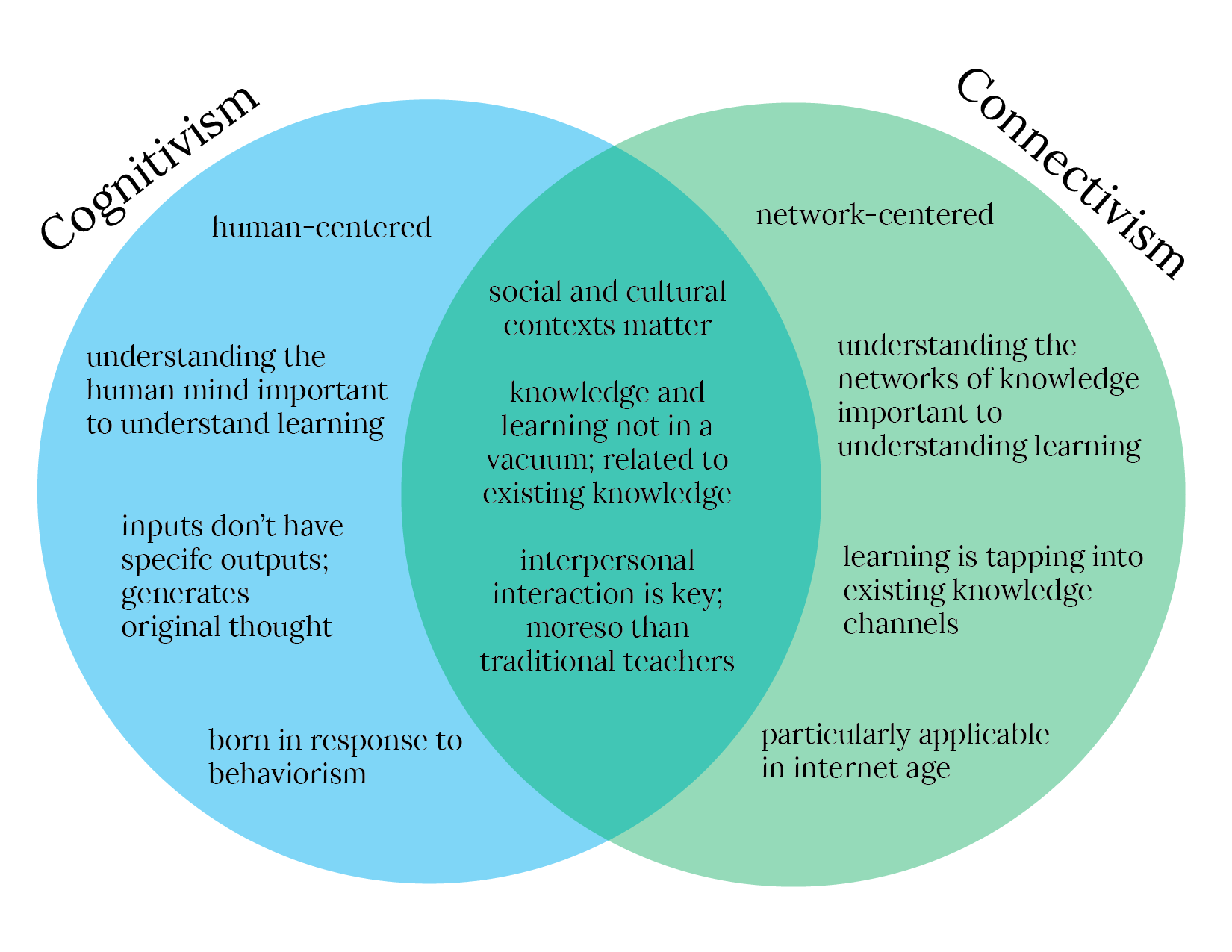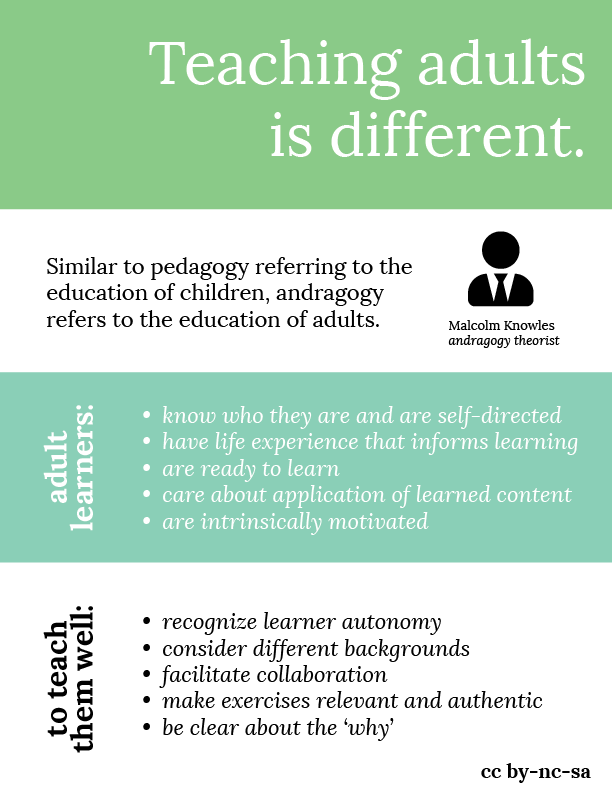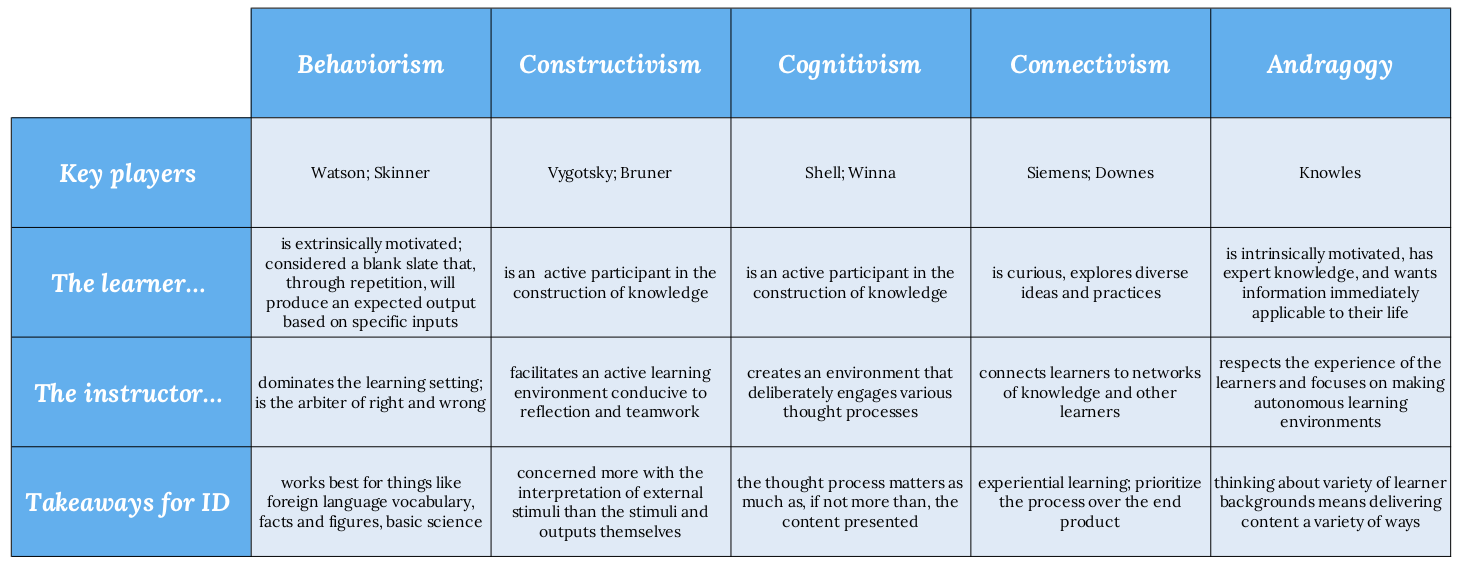Comparing Learning Theories
Recommended readings: In addition to the classics by founding authors of these theories, I found these articles useful in writing the scenarios and reflections that follow.
Al-Huneidi, A. M., & Schreurs, J. (2012). Constructivism Based Blended Learning in Higher Education. International Journal of Emerging Technologies in Learning, 7(1), 4-9.
Boghossian, P. (2006). Behaviorism, Constructivism, and Socratic Pedagogy. Educational Philosophy & Theory, 38(6), 713-722. doi: 10.1111/j.1469-5812.2006.00226.x
Ertmer, P. A., & Newby, T. J. (2013). Behaviorism, Cognitivism, Constructivism: Comparing Critical Features From an Instructional Design Perspective. Performance Improvement Quarterly, 26(2), 43-71. doi: 10.1002/piq.21143
Kop, R., & Hill, A. (2008). Connectivism: Learning theory of the future or vestige of the past? International Review of Research in Open & Distance Learning, 9(3), 1-13.
Nagowah, L., & Nagowah, S. (2009). A Reflection on the Dominant Learning Theories: Behaviourism, Cognitivism and Constructivism. International Journal of Learning, 16(2), 279-285.
Storey, V. A., & Wang, V. C. X. (2017). Critical Friends Protocol: Andragogy and Learning in a Graduate Classroom. Adult Learning, 28(3), 107-117. doi: 10.1177/1045159516674705
Behaviorism
Background: Behaviorism has its origins in psychology in the late 19th/early 20th century. Focusing on objective facts and behaviors as ways to discern meaning and understanding instead of trying to decipher the innerworkings of consciousness, it was a departure from dominant paradigm of the time. Watson and, later, Skinner are the big names tied to this theory. In thinking about behaviorism with regards to education, the instructor’s goal is to foster certain behaviors in their students by providing the appropriate prompts that would elicit said behavior. This is accomplished with a lot of repetition, question and response type activities, and positive/negative feedback where needed.
Example: Teaching adults how to use a counterintuitive but important computer program called EndNote. To be successful using this program, you need to memorize sequences of clicking, therefore behaviorism could work well here. The instruction is built around a series of tasks that the instructor demonstrates, then the students do it. While the students attempt the tasks, the instructor walks around and praises those who have completed the task. Such tasks may include successfully downloading references from PubMed then importing them or automatically downloading PDFs for references in the library. At the end, the instructor asks a series of questions (stimuli) that the students go through and answer (response) reflecting the day’s learning. These could include, “What file formats can EndNote accept references in?” “How do you modify your favorites list?”
Constructivism

Example: (Building on the behaviorism scenario laid out above). An additional learning objective could be, now that the students know how to add citations to papers, when should they cite things in their writing? This is perfect to think about with regards to constructivism instead of behaviorism because it’s such a culturally variable practice and where students have come from (heritage, previous institutions, disciplines, etc.) is going to hugely matter. Skills in ZPD would be: distinguishing between original thought and thought influenced by other works that warrants a citation and also identifying situations in writing that necessitate citations (quotations, paraphrasing, summarizing, facts/information/data). A social constructivist activity - students could be given a section of an article with all of its citations stripped. They would have a short amount of time to note where they think citations likely belong, then they will discuss with another student their answers. The pair must present what they talked about back to the bigger group, leading to a dicsussion of citation norms in US academia.
Cognitivism and Connectivism

Example: (Thinking about the same situation laid out above). Taking a cognitivist approach to thinking about this EndNote class and the learners in the room, I would have to think beyond inputs I’m providing, the expected outputs, and the Zone of Proximal Development. Cognitivism is concerned with existing knowledge and how new things learned must be attached to existing schema to stick. What kind of computer skills do students have? Have they manually formatted citations before? These foundations and existing skills will absolutely determine how students take the information presented in the class and what they can do with it. If you are unfamiliar with Apple computers, EndNote for Mac could be completely incomprehensible without the needed context of how this operating system works. Connectivism thinks less about the connections within a person’s mind and more about the collective human network of knowledge. In this mindset, a student’s ability to Google answers to questions to understand alleviates some of the worries the cognitivist approach might have. This site and this site were useful in constructing the above venn diagram.
Andragogy

Example: Continuing our EndNote example, designing a class in line with the principles of andragogy may move away from the controlled demo-activity-demo-activity and move toward students working through a list of tasks on their own time, which recognizes more learner autonomy. The designer here would also want to think about incorporating a lot of examples of application of this material to the work of the attendees to both ensure that the information sticks and that they feel the class is worthwhile. Hand in hand with this idea is that the class would need to be very forward about the specific takeaways it offers and what is and is not within the scope of the class in order to gain full buy-in. This site was very useful in learning about the characteristics of adult learners.
